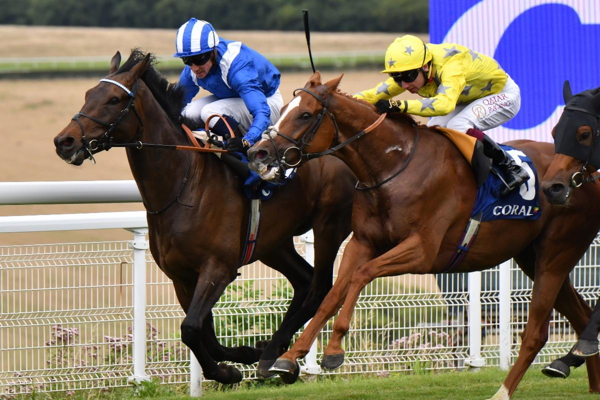 |
RacingBetter News |
| Tuesday 10th December 2024 | |
Flat Racing vs. National Hunt Racing: Key Differences in the UK

Horse racing in the UK is a thrilling spectacle steeped in tradition and excitement. Among its many forms, Flat Racing and National Hunt Racing stand out as the two dominant disciplines, each offering a unique experience for fans and competitors alike.
Flat racing, known for its sheer speed and elegance, contrasts sharply with the grit and unpredictability of National Hunt Racing’s jumps and longer distances.
If you’re captivated by Royal Ascot's glamour or the Grand National's heart-pounding action, understanding these key differences deepens your appreciation of the sport. Let’s explore what sets these two racing worlds apart.
What Is Flat Racing?
Flat racing is one of the most popular forms of horse racing, known for its speed and excitement. Unlike jump racing, flat racing takes place on level tracks without obstacles, testing a horse's stamina and speed. Races typically range from 5 furlongs to 2.5 miles, with horses competing on turf or synthetic surfaces.
The straightforward nature of flat racing allows fans to focus on the thrilling performances of both the horses and jockeys.
This discipline is often associated with high-profile events like The Derby and Royal Ascot, where the world’s finest thoroughbreds compete. These races showcase not only the horses' athleticism but also the jockeys' strategic skills, who must navigate the race with precision to secure victory. For many, flat racing represents the epitome of equestrian sport.
To truly appreciate flat racing, understanding its nuances is essential. Factors like breeding, training, and track conditions all play a significant role in a horse’s performance. For those interested in learning more, engaging in horse racing research provides valuable insights into what makes a champion on the flat.
What Is National Hunt Racing?
National Hunt Racing, also known as jump racing, is a captivating form of horse racing that combines speed, stamina, and skill. It originated in Ireland in the early 18th century.
These races, known as “pounding races,” involved horses racing from one town to another, overcoming natural obstacles like hedges, ditches, and walls. The term “steeplechase” was coined from races starting and finishing at church steeples, with the earliest recorded race occurring in County Cork in 1752.
Over time, the sport evolved into organised events, with England hosting notable races like the Grand National and the Cheltenham Festival. Modern National Hunt Racing features three types: steeplechases, where horses jump fixed fences; hurdles, which involve smaller, flexible barriers; and bumper races, flat competitions for novice horses.
This historic discipline has gained global popularity, attracting fans who admire its challenges and rich traditions.
Key Differences in Racing Seasons
Flat and National Hunt racing have distinct seasons, reflecting their unique characteristics and track conditions. Flat racing typically occurs during the warmer months, from spring to autumn.
The dry weather and firmer ground create ideal conditions for speed-focused races, allowing horses to showcase their agility and stamina on flat, obstacle-free tracks. Prestigious events like Royal Ascot and The Derby are highlights of this season.
In contrast, National Hunt racing thrives in the cooler months, from autumn to spring. The softer ground during this period reduces the risk of injury when horses tackle jumps and hurdles, making it safer for both horses and jockeys.
Events like the Cheltenham Festival and the Grand National dominate the National Hunt calendar, drawing enthusiastic crowds despite the colder weather. These seasonal differences ensure year-round excitement for racing fans, with each discipline offering appeal and challenges during its peak season.
Training and Horse Breeding
Flat racing and National Hunt racing differ significantly in training and horse breeding, reflecting the unique demands of each discipline. Flat racing prioritises speed and agility.
Horses bred for this sport, often younger thoroughbreds, are leaner and built for explosive power over shorter distances. Training focuses on developing muscle strength, sprinting ability, and quick acceleration, ensuring they excel in fast-paced races.
National Hunt racing, in contrast, requires stamina, endurance, and resilience. Horses are typically older and more robust, bred for their ability to handle long distances and navigate jumps. Training programmes include endurance-building exercises and jump-specific techniques, preparing horses to tackle complex courses safely and efficiently.
These differences influence a horse’s career path. Flat racing horses usually have shorter careers, while National Hunt horses, due to their durability, often race for many years. Both breeding and training play a pivotal role in shaping champions for their respective disciplines.
Jockey Types
The world of horse racing is a blend of skill, dedication, and love for the sport, with jockeys playing a pivotal role in its excitement. Flat racing and jump racing demand different physical and mental attributes from jockeys.
Balance, coordination, and endurance are crucial in flat racing as riders manoeuvre horses at high speeds on level tracks. Jump racing, however, requires additional skills like navigating complex courses and clearing fences while maintaining control and speed.
Both disciplines demand a deep understanding of the horse. Jockeys must communicate effectively with their mounts, interpreting body language and anticipating movements. This connection is especially critical in jump racing due to its technical challenges.
Licensing requirements, racing strategies, and ethical standards are integral to both forms. Jockeys undergo rigorous training to meet safety and welfare standards for themselves and their horses. Interestingly, some jockeys are branching into new disciplines, highlighting the ever-evolving nature of the sport.
Conclusion
Flat Racing and National Hunt Racing each showcase the depth and diversity of UK horse racing. Flat Racing offers speed and elegance, while National Hunt Racing tests stamina and skill. Together, they create a year-round spectacle that captivates fans. If you enjoy the thrill of jumps or the precision of flat tracks, these disciplines showcase the sport's timeless appeal and rich tradition.







